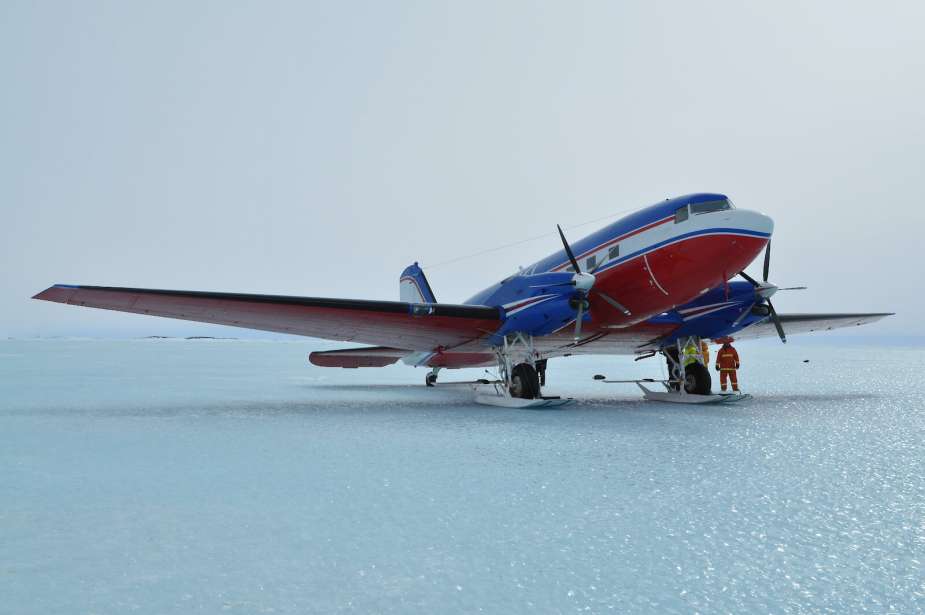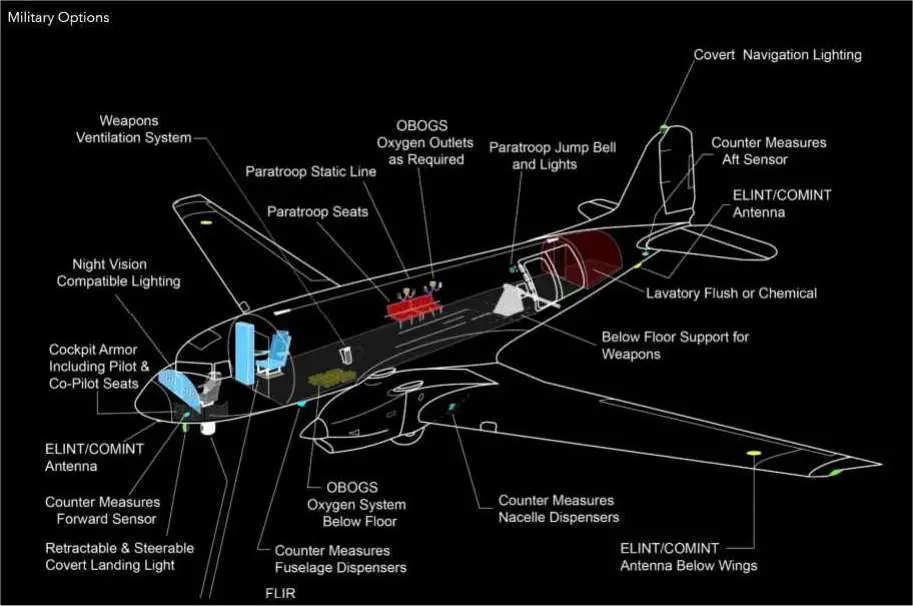On April 18, 2024, the US State Department approved a potential Foreign Military Sale to the Government of Argentina for an unspecified number of Basler BT-67 aircraft and associated logistical and program support, with an estimated value of $143 million. The Basler BT-67 aircraft is a complete modernization of the Douglas DC-3, involving the replacement of approximately 80% of the aircraft’s components.
Follow Army Recognition on Google News at this link

Australia already operates a Basler BT-67 aircraft for extensive long-distance operations in Antarctica under the Australian Antarctic Program. (Picture source: Australian Government)
Argentina's request includes Basler BT-67 aircraft, spare engines, repair parts, consumables, accessories, maintenance support, handling equipment, technical documentation, participation fees, studies, ferry and transportation support, personnel training, and engineering and logistics services. The proposed sale aims to enhance Argentina's capability for airdrop and airlift operations, particularly in servicing Antarctica during the winter, thereby alleviating the strain on existing airlift assets.
The principal contractor for this potential sale is Basler Turbo Conversions, headquartered in Oshkosh, Wisconsin. Established in 1988, Basler Turbo Conversions specializes in remanufacturing the iconic DC-3 aircraft into the modern BT-67 version, completing an average of 2-3 aircraft conversions annually. Alongside conversions, the company offers refurbishment and upgrades for existing BT-67 owners and occasionally undertakes projects involving classic DC-3s. Notable recent endeavors include the complete restoration of the C-47 ‘That’s All Brother’ for the Commemorative Air Force. Accumulating a substantial inventory of DC-3 parts over the years, Basler addresses the challenge of sourcing increasingly scarce components for operators.
The Douglas DC-3 is recognized for its significant role in the evolution of air travel, serving as a commercial airliner and military transport. Introduced in 1935, this low-wing twin-engine monoplane is capable of seating 21 to 28 passengers or carrying up to 2,720 kg of cargo. The aircraft can traverse the continental United States from New York to Los Angeles in about 18 hours, requiring only three stops, which was an improvement over earlier models in terms of speed, range, reliability, and passenger comfort. Although civilian production ceased in 1943 after 607 units were built, the DC-3 continues to be used globally in various capacities, reflecting its utility on less commercially intensive routes. Despite being surpassed by more modern aircraft in primary markets post-World War II, several hundred DC-3s remain operational.
Given the low production volume, Basler has developed an internal manufacturing capability to produce over 6,500 parts supporting the BT-67 conversion program, including structural, sheet metal, and fiberglass components. As of 2020, the current price range for a BT-67 is between $9 million and $13 million, contingent on customer options, which suggests that the US sale to Argentina could involve more than one aircraft. A typical conversion, spanning 45,000 to 50,000 man-hours over seven months, involves replacing approximately 80% of the aircraft’s components. Utilizing Pratt & Whitney Canada PT6A-67R engines and Hartzell five-blade propellers, the BT-67 undergoes a comprehensive overhaul, aerodynamic enhancements, structural modifications, and system upgrades, including fuel and anti-ice systems, to optimize performance and reliability.
The BT-67 offers extensive customization options to cater to specific requirements, whether for ISR (Intelligence, Surveillance, Reconnaissance), scientific research, or military applications. Features such as cargo doors, loading lights, roller ball mats, D-Ring tie-downs, mission stations, and avionics enhancements provide versatility for various missions. Military options include provisions for weapons systems, night vision compatibility, cockpit armor, ELINT/COMINT antennas, countermeasures, covert lighting, paratroop equipment, and FLIR (Forward-Looking Infrared) capabilities.
Despite its roots in the venerable Douglas DC-3 airframe, the Basler BT-67 represents a modern aircraft platform renowned for its reliability and adaptability. Basler Turbo Conversions emphasizes the aircraft's durability and performance, while a conversion of the BT-67 typically takes 9 to 12 months, meeting the highest standards set by the US Federal Aviation Administration (FAA). In addition, a gunship version of the Basler BT-67 has been in use by the Colombian Aerospace Force since 2017. These aircraft, equipped with a forward-looking infrared (FLIR) ball, enhance their capability for nighttime missions.
The Basler BT-67 can accommodate a crew of two (pilot and co-pilot) and up to 38 passengers. With dimensions of 20.65 m in length, 28.95 m in wingspan, and 5.15 m in height, it offers ample space for personnel and cargo. Powered by two Pratt & Whitney Canada PT6A-67R turboprop engines, each delivering 1,281 hp, and equipped with 5-bladed Hartzell constant speed propellers, the BT-67 ensures reliable performance. It achieves a maximum speed of 528 km/h, a cruise speed of 390 km/h, and a range of 3,960 km with long-range fuel tanks and a 45-minute reserve. Additionally, it operates efficiently at a service ceiling of 25,000 feet, making it suitable for various missions and environments.

Military options include provisions for weapons systems, night vision compatibility, cockpit armor, ELINT/COMINT antennas, countermeasures, covert lighting, paratroop equipment, and FLIR (Forward-Looking Infrared) capabilities. (Picture source: Basler Turbo Conversions)
















